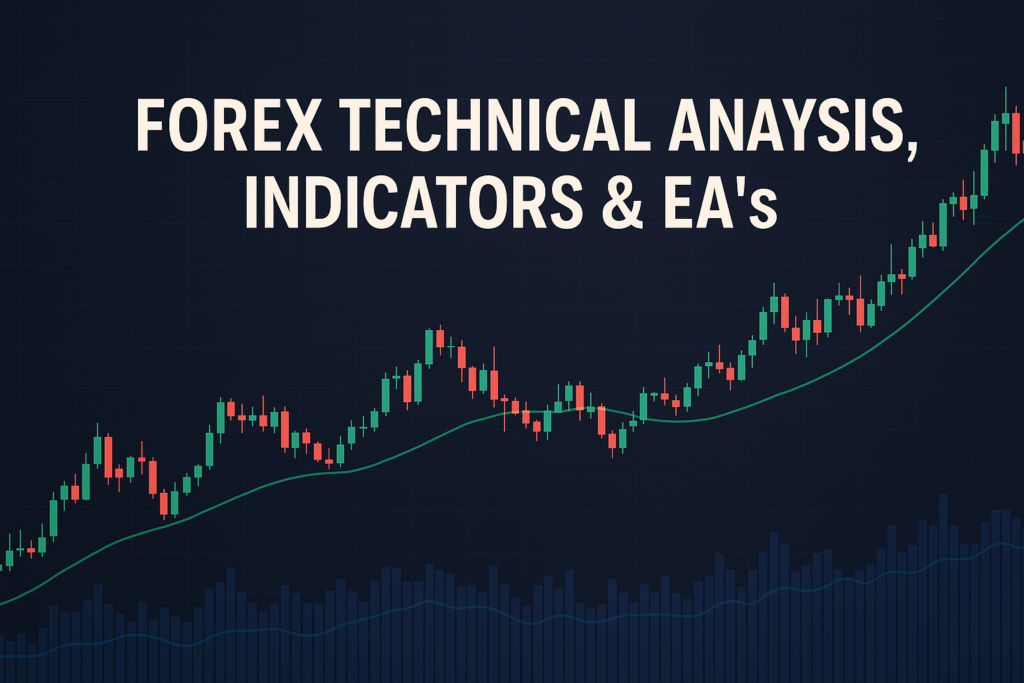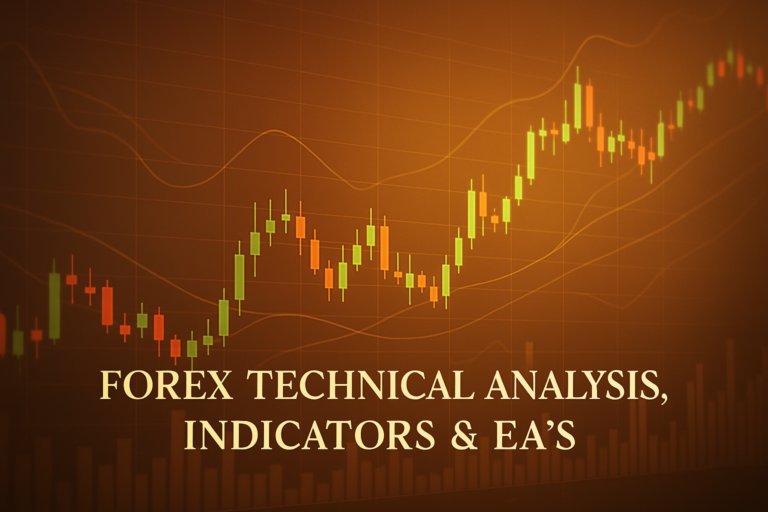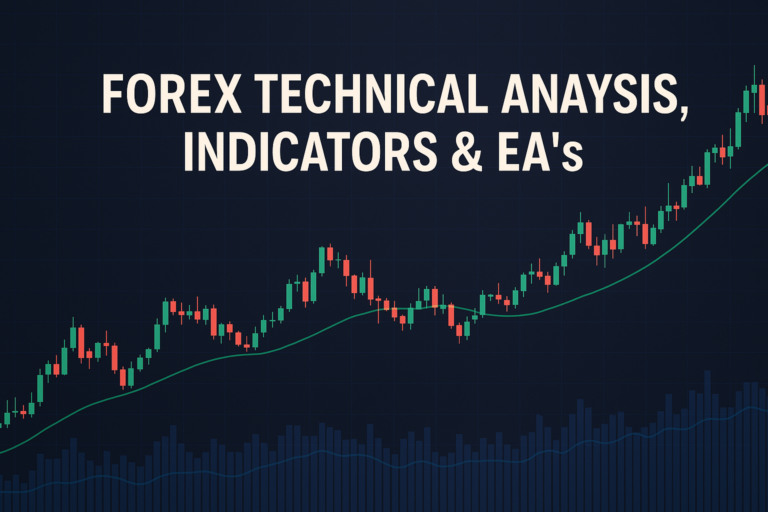
Envelopes are essential tools for Forex trading, helping traders identify trends and make informed decisions.
In the bustling world of Forex trading, there’s a tool called Envelopes that can be a game-changer for traders. Imagine riding a wave that guides you through the ups and downs of currency prices. Envelopes help traders spot trends and make informed decisions. However, many traders, both new and seasoned, find themselves puzzled by this method. They often struggle to grasp how to use Envelopes effectively in their trading strategies.
Understanding how Envelopes work is crucial. By learning to apply this tool, traders can enhance their decision-making process and potentially increase their profits. In this article, we will explore what Envelopes are, their history, advantages, and disadvantages, and how to implement them in your trading strategies.
What is a Envelopes?
Envelopes are a technical analysis tool used in Forex trading. Think of them as two lines that sit above and below a moving average on a price chart. These lines create a “band” around the price action. When the price touches these lines, it can signal a potential buying or selling opportunity. In simple terms, Envelopes help traders understand when a currency pair is overbought or oversold.
Types of Envelopes
There are different types of Envelopes that traders can use. The most common ones are:
- Simple Envelopes: These are based on a simple moving average. They are easy to understand and use.
- Exponential Envelopes: These use an exponential moving average, which gives more weight to recent prices.
- Weighted Envelopes: These take into account the volume of trades, making them useful for active traders.
How Envelopes Smooth Out Price Action
Envelopes help smooth out price action by filtering noise from price movements. When the market is volatile, prices can swing wildly, making it hard to make decisions. Envelopes create a clearer picture by showing where prices are relative to their average. This way, traders can focus on the trend rather than the chaos.
Common Periods Used and Why
Traders often use different periods for Envelopes, such as 20, 50, or 100. A shorter period, like 20, reacts quickly to price changes, which is great for day trading. A longer period, such as 100, is slower and better for identifying long-term trends. Choosing the right period depends on your trading style and goals.
The History of Envelopes: How It Became Popular
Origin of Envelopes
The concept of Envelopes dates back to the early days of technical analysis. They were created to help traders visualize price movements more effectively. Over time, traders began to adopt Envelopes in their strategies, leading to their rise in popularity.
When Did Traders Start Using It Widely?
As Forex trading grew in the late 20th century, Envelopes became a staple tool among traders. The emergence of trading software made it easier to apply Envelopes to charts, allowing more traders to benefit from this technique.
Real-Life Stories
Many professional traders have credited Envelopes for their success. For example, a trader named Sarah used Envelopes to identify a trend in the Euro/USD pair. By following the signals given by Envelopes, she was able to make profitable trades and significantly increase her account balance.
Advantages and Disadvantages of Envelopes
Advantages
Using Envelopes has several benefits:
- Helps Identify Trends Easily: Envelopes make it simple to see if a currency pair is trending.
- Useful for Dynamic Support and Resistance: The lines act as support and resistance levels, guiding traders on when to buy or sell.
- Works Well for Crossover Strategies: Envelopes can be combined with moving averages to create effective crossover strategies.
Disadvantages
However, there are also some downsides to using Envelopes:
- lags Behind Price Movements: Envelopes may not react quickly enough during fast market changes, leading to missed opportunities.
- Can Give False Signals in Sideways Markets: In a sideways market, Envelopes can produce misleading signals, causing confusion.
How to Apply Envelopes on MT4 & MT5
Step-by-Step Guide to Adding Envelopes on Charts
To add Envelopes to your charts in MT4 or MT5, follow these steps:
- Open your trading platform and select the currency pair you want to analyze.
- Go to the “Insert” menu, select “Indicators,” and then “Trend.” Choose “Envelopes.”
- Adjust the settings based on your preferences and click “OK.”
Customizing Envelopes Settings
You can customize your Envelopes settings, such as the period, colors, and types. This allows you to tailor the tool to your trading style. For example, you might choose a 20-period simple envelope with a green upper line and a red lower line to make it easily distinguishable.
Saving Templates for Easy Application
Once you’ve set up your Envelopes, you can save your template for future use. This makes it easier to apply the same settings across different currency pairs without repeating the process.
5 to 7 Trading Strategies Using Only Envelopes
All Time Frame Strategy (M5 to D1)
This strategy works across all time frames. When the price touches the upper envelope, consider selling. Conversely, when it touches the lower envelope, think about buying. For example, if the EUR/USD touches the lower envelope on a 15-minute chart, it may indicate a buying opportunity.
Trending Strategies
In a strong trend, use Envelopes to identify entries. If the price consistently touches the upper envelope, it may signal a strong upward trend. For instance, if the GBP/USD is touching the upper envelope on a daily chart, it could indicate a good time to buy.
Counter Trade Strategies
In a counter-trend strategy, look for price to touch the upper or lower envelopes before making a trade in the opposite direction. If the AUD/USD touches the upper envelope, consider selling, expecting a pullback.
Swing Trade Strategies
Swing traders can use Envelopes to identify potential reversal points. If the price hits the lower envelope and shows signs of reversing, it might be a good time to buy. For example, when the USD/CAD touches the lower envelope and bounces back, a swing trade could be initiated.
5 to 7 Trading Strategies Combining Envelopes with Other Indicators
All Time Frame Strategy (M5 to D1)
Combining Envelopes with RSI (Relative Strength Index) can enhance your trading. When the price touches the upper envelope and RSI is above 70, it can signal a sell. Conversely, if the price hits the lower envelope with RSI below 30, it might indicate a buy.
Trending Strategies
Using Envelopes with MACD (Moving Average Convergence Divergence) can help spot strong trends. If the price is at the upper envelope and MACD crosses below the signal line, it could be a sell signal. For example, if the EUR/JPY shows this pattern, consider selling.
Counter Trade Strategies
For a counter-trend strategy, combine Envelopes with Bollinger Bands. If the price touches the upper envelope and the Bollinger Band is also high, it may signal a sell opportunity. This is especially useful in volatile markets.
Swing Trade Strategies
Using Envelopes with Fibonacci retracement levels can help find good entry points. When the price touches the lower envelope and also aligns with a Fibonacci level, it signals a potential buy opportunity.
Top 10 FAQs About Envelopes
1. What are Envelopes in Forex trading?
Envelopes are a technical analysis tool that helps traders identify potential buy and sell signals based on price movements relative to a moving average.
2. How do I set up Envelopes on my chart?
You can set up Envelopes by going to the indicators section of your trading platform and selecting Envelopes. Customize the settings to fit your trading style.
3. What is the best period to use for Envelopes?
The best period depends on your trading strategy. Shorter periods work for day trading, while longer periods are better for identifying long-term trends.
4. Can Envelopes be used with other indicators?
Yes, Envelopes can be effectively combined with other indicators like RSI, MACD, and Bollinger Bands to enhance trading strategies.
5. What are the advantages of using Envelopes?
Envelopes help identify trends easily, act as dynamic support and resistance, and work well for crossover strategies.
6. What are the disadvantages of using Envelopes?
Envelopes can lag behind price movements and may give false signals in sideways markets, leading to confusion.
7. How do Envelopes smooth out price action?
Envelopes filter out noise from price movements, making it easier for traders to see trends and make informed decisions.
8. Are Envelopes suitable for all trading styles?
Yes, Envelopes can be adapted for various trading styles, including day trading, swing trading, and long-term investing.
9. How can I improve my trading results using Envelopes?
Practice using Envelopes in a demo account, combine them with other indicators, and develop a solid trading plan to improve your results.
10. Should I use Envelopes as my only trading tool?
While Envelopes are helpful, it’s best to use them in conjunction with other tools and strategies for a well-rounded trading approach.
Conclusion
In summary, Envelopes are a valuable tool for Forex traders looking to enhance their trading strategies. They help identify trends, provide support and resistance levels, and can be combined with other indicators for improved results. However, be mindful of their limitations and practice using them in a demo account before trading with real money.
Remember, the key to successful trading is to test your strategies and find what works best for you. Happy trading!
Expand Your Knowledge
- 📌 Forex Trading Learning Road Map
- 📌 Forex Trading Course with no Fees
- 📌 Forex Trading Issues, Problems, and Solutions
- 📌 Forex Daily Forecast & Live Updates
- 📌 Forex Fundamental & News Analysis: Tomorrow’s Market Movers & Trade Opportunities
- 📌 Forex Education Hub: Learn & Profit
- 📌 Forex Technical Analysis, Indicators & EA’s
Start Trading Today
Ready to take your forex trading to the next level? Open an account with Exness, one of the most trusted platforms in the industry. 👉 Sign Up Now and start trading with confidence!
Exness stands out with ultra-low spreads for mini traders, instant withdrawals, and zero spread accounts for pro traders. Trusted since 2008, Exness offers lightning-fast execution, no hidden fees, and a secure, transparent trading environment—giving you the edge you need to succeed. 🚀 Join now and trade smarter!
Watch this helpful video to better understand Envelopes:
Note: The video above is embedded from YouTube and is the property of its original creator. We do not own or take responsibility for the content or opinions expressed in the video.
Many traders rely on moving averages to track market trends and pinpoint shifts in direction. However, while moving averages can be helpful, they often produce false signals. To mitigate this issue, traders can use moving average envelopes, which serve as a filtering tool that reduces market noise. Moving average envelopes consist of two bands plotted around a moving average—one above and one below—allowing traders to visualize the upper and lower limits of price movement within a typical trading range. The concept behind this indicator is that price tends to oscillate within defined boundaries during stable market conditions. However, when conditions shift, prices may break through these boundaries, signaling potential trading opportunities. The envelopes are created by taking a moving average and adjusting it by a certain percentage, which results in a channel that reflects price action.
Selecting the right parameters for moving average envelopes is crucial and varies based on individual trading goals and market characteristics. Day traders might favor shorter moving averages and tighter envelopes, while swing traders may opt for longer moving averages with wider envelopes, particularly in more volatile markets. The envelopes can also be compared to other indicators like Bollinger Bands and Keltner Channels, but unlike those, traders need to manually adjust the envelope parameters based on market volatility. Moreover, how traders interpret the envelopes can differ; they can be used for trend-following, identifying overbought or oversold conditions, or even as dynamic support and resistance levels. The slopes of the envelope bands provide insight into market trends—upward sloping indicates an uptrend, while downward sloping suggests a downtrend. By understanding how to use moving average envelopes effectively, traders can enhance their strategies and make more informed decisions in the Forex market.



